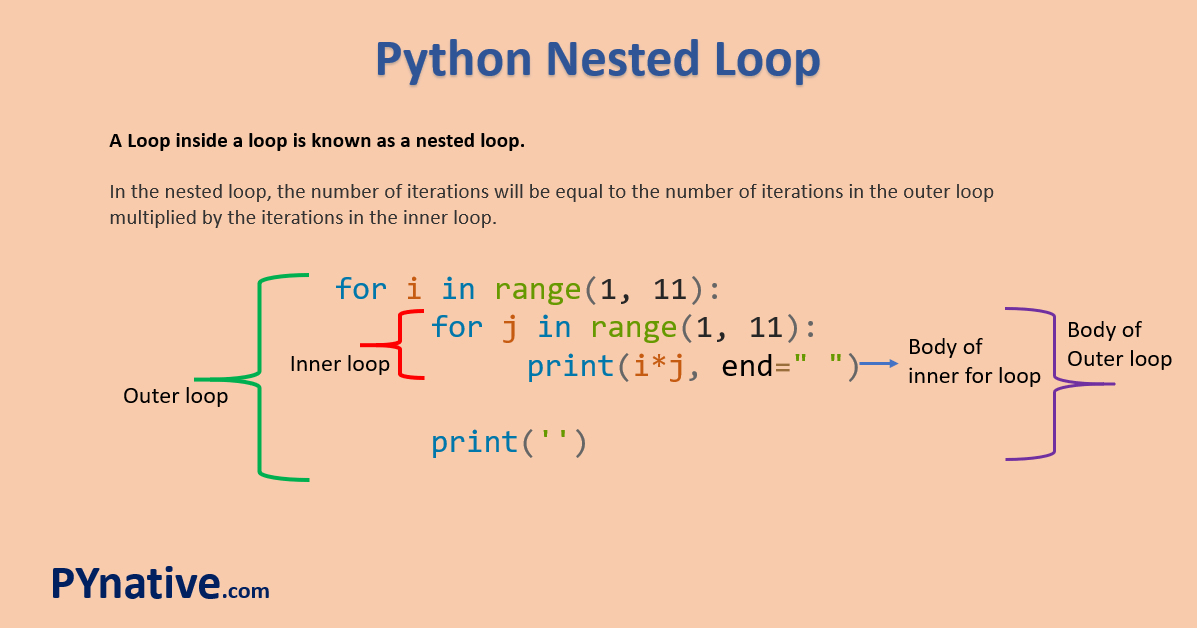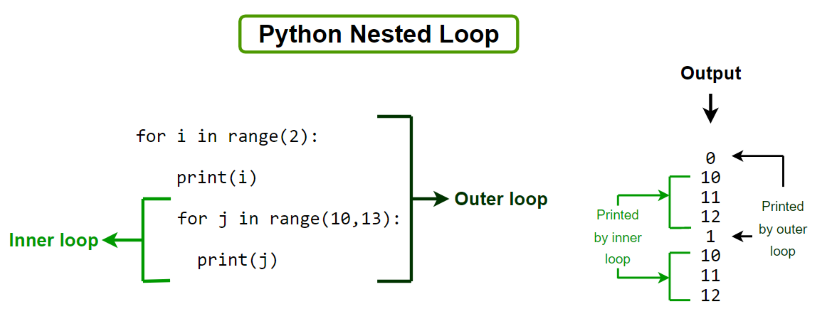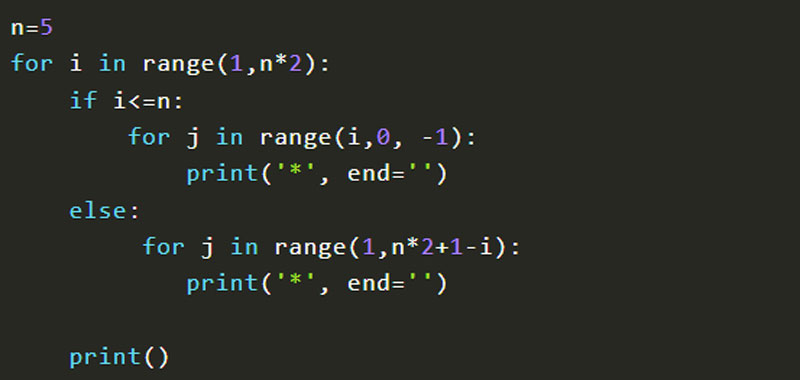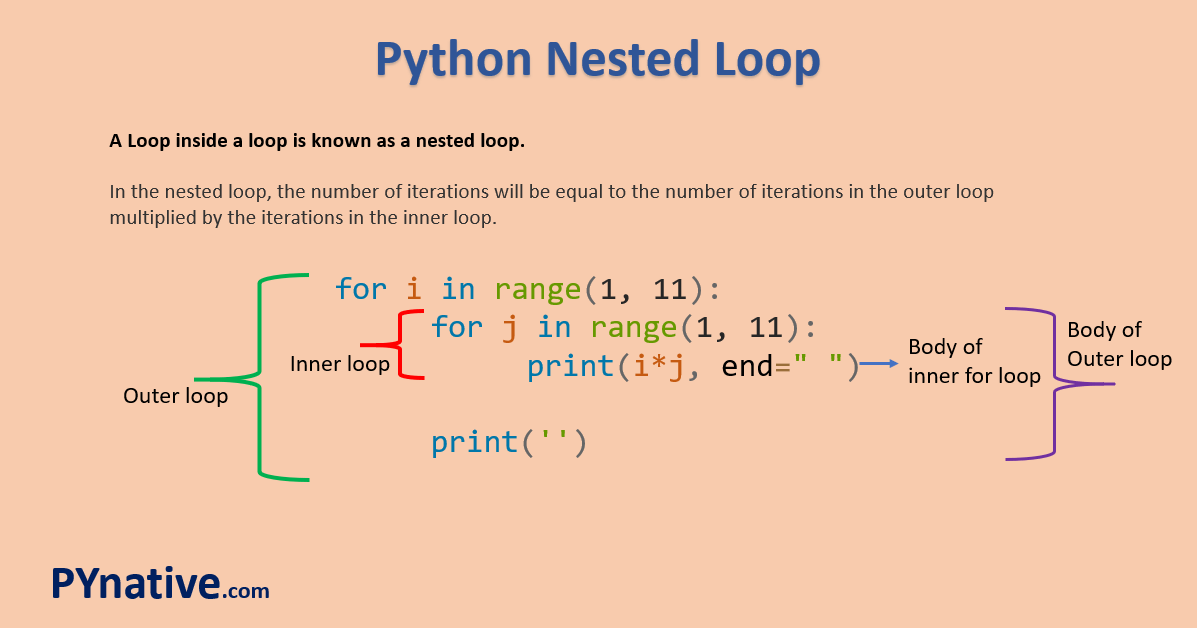Can you have a for loop inside a while loop in Python?
Can you have a for loop inside a while loop in Python?

Yes, it is possible to have a for loop inside a while loop in Python.
In fact, the syntax for combining while and for loops in Python is quite flexible. You can use them together in various ways, depending on your specific needs.
Let's first consider a simple example where we have both a while loop and a for loop:
i = 0
while i < 3:
print("Outer loop iteration:", i)
for j in range(4):
print("Inner loop iteration:", j)

i += 1
In this code, the while loop iterates three times, and each time it runs a for loop that iterates four times. This is a common scenario where you want to perform some action multiple times based on some condition, and then iterate over some data.
Another important aspect to consider when combining loops in Python is the use of break and continue statements. You can use these to control the flow of your program, for example:
i = 0
while i < 3:
print("Outer loop iteration:", i)
for j in range(4):
if j == 2:
break # Stop the inner loop early
print("Inner loop iteration:", j)
i += 1
Here, we use a break statement to stop the inner for loop after two iterations. The outer while loop continues as normal.
There are some more complex scenarios where you might want to combine while and for loops. For example, imagine you're processing a list of lists:
data = [[1, 2], [3, 4], [5, 6]]
i = 0
while i < len(data):
print("Outer loop iteration:", data[i])
for j in range(len(data[i])):
print("Inner loop iteration:", data[i][j])
i += 1
Here, we use the while and for loops to process each element of a list of lists.
In summary, Python's while and for loops are flexible and can be combined in various ways to achieve complex control structures. By using break and continue statements, you have even more flexibility to customize your program flow.
Finally, always remember that if you are stuck on a particular programming problem, the best way to solve it is to work through each step carefully, think critically about what you need to do next, and then execute your plan.
nested loops python examples

I'd be happy to explain nested loops in Python!
What are Nested Loops?

In Python, a loop is a sequence of statements that execute repeatedly based on certain conditions. When we nest loops, it means that we have multiple loops within another loop. This allows us to iterate over different parts of our data multiple times, which can be very powerful.

Examples of Nested Loops:
Let's start with some simple examples:
Printing a 2D List: Suppose you have a list of lists, where each inner list represents a row in a table. You want to print out the contents of this table.table = [[1, 2, 3], [4, 5, 6], [7, 8, 9]]
for outer_list in table:
for num in outer_list:
print(num)
This will output:
1
2
3
4
5
6
7
8
9
numbers1 = [1, 2, 3]
numbers2 = [4, 5, 6]
for num1 in numbers1:
for num2 in numbers2:
print(num1, num2)
This will output:
1 4
1 5
1 6
2 4
2 5
2 6
3 4
3 5
3 6
table = [[1, 2, 3], [4, 5, 6], [7, 8, 9]]
row_sums = []
for outer_list in table:
row_sum = 0
for num in outer_list:
row_sum += num
row_sums.append(row_sum)
print(row_sums)
This will output:
[6, 15, 24]
grid = [['*' for _ in range(3)] for _ in range(3)]
for row in grid:
for cell in row:
print(cell, end=' ')
print()
This will output:
* * *
Why Use Nested Loops?
Nested loops can be very useful when you need to iterate over different parts of your data multiple times. For example, if you have a 2D list and want to sum up the elements in each row, or find all the pairs of numbers where one number is from each list.
In general, nested loops allow you to write more complex algorithms that involve iterating over different parts of your data in a flexible way. They can be especially useful when combined with other control structures like if statements and lists.
I hope this helps! Let me know if you have any questions.





























